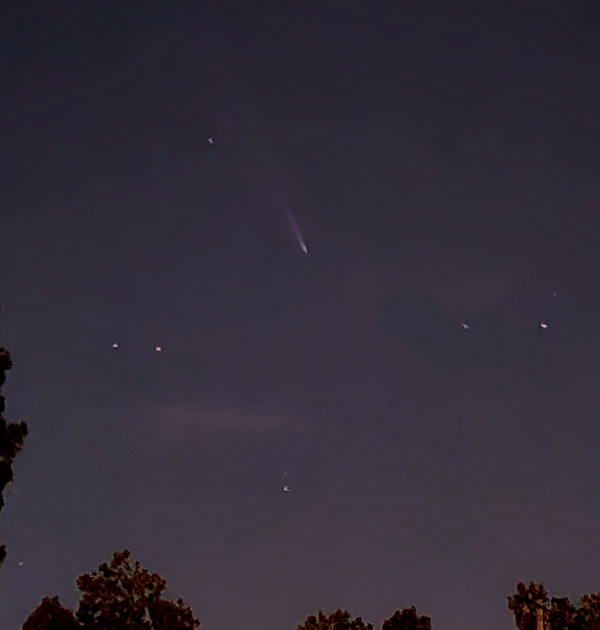Rare Oort cloud comet dazzles Bay Area skies

[Comet Tsuchinshan-Atlas as seen from the Bay Area. Photo Credit: Yujun Lee]
In October of 2024, the Oort cloud comet C/2023 A3 (Tsuchinshan–ATLAS) made its path close to the Earth, allowing it to be seen with the naked eye at night.
The celestial visitor could be spotted from all around the globe, including the San Francisco Bay Area in California.
This year has been an extraordinary one for residents of the Bay Area, as they got to observe a solar eclipse, northern lights, and meteor showers.
Since the existence of the comet became known, it has gained the attention of many people in the area.
The Bay Area’s clear weather throughout October made it easy for residents to spot the rare celestial event with their naked eye.
Gerald McKeegan, an adjunct astronomer at the Chabot Space & Science Center in Oakland, California, shared information about comet sightings on the Center’s Facebook page.
McKeegan wrote, “Beginning October 12th, it should be viewable with binoculars or a small telescope, very low in the west-southwest sky about 20 minutes after sunset. Later in October, it will be higher in the sky, so it can be seen later in the evening, when the sky is darker, possibly naked eye.”
This raises the question: where did the comet come from?
C/2023 A3 is a comet that was discovered in 2023, as its name suggests.
The comet was first discovered by the Purple Mountain (Zijin Shan) Observatory in Nanjing, China, on January 9th, 2023.
It was later independently discovered by the South African Astronomical Observatory (SAAO) in South Africa, on February 22nd, 2023.
The name Tsuchinshan-ATLAS was given to the comet to honor these two observatories: Tsuchinshan being the postal romanization of the Mandarin name of Purple Mountain Observatory, and ATLAS being part of the Asteroid Terrestrial-impact Last Alert System.
Its significance lies in its type being an Oort cloud comet.
An Oort cloud comet originates from the Oort cloud, a collection of icy planetesimals that is thought to be surrounding the Sun.
Different types of comets display tails that look different in terms of size, shape, and color due to their varying elemental composition.
Regarding the tail of C/2023 A3, McKeegan explained, “As it got closer to the Sun, the ices began to sublimate, forming a gas cloud, called a coma, that surrounds the head of the comet. The solar wind blows that gas away from the comet, forming a tail.”
As it approached its perihelion, its closest position to the Sun during its orbit, it was thought to be at risk of disintegrating due to the Sun’s intense heat and gravity, especially considering its icy composition.
However, after it reached its perihelion position on September 27th, it remained intact, allowing it to pass by the Earth at a close distance and be seen by the naked eye.
Observing this comet is a rare opportunity, McKeegan added: “Astronomers frequently track comets orbiting around the sun, but most are too far away, or too faint to be seen without a moderate-sized telescope.”
According to NASA, the comet should remain visible through early November.

- Yujun Lee / Grade 11
- Homestead High School

![THE HERALD STUDENT REPORTERS [US]](/assets/images/logo_student_us.png)
![THE HERALD STUDENT REPORTERS [Canada]](/assets/images/logo_student_ca.png)
